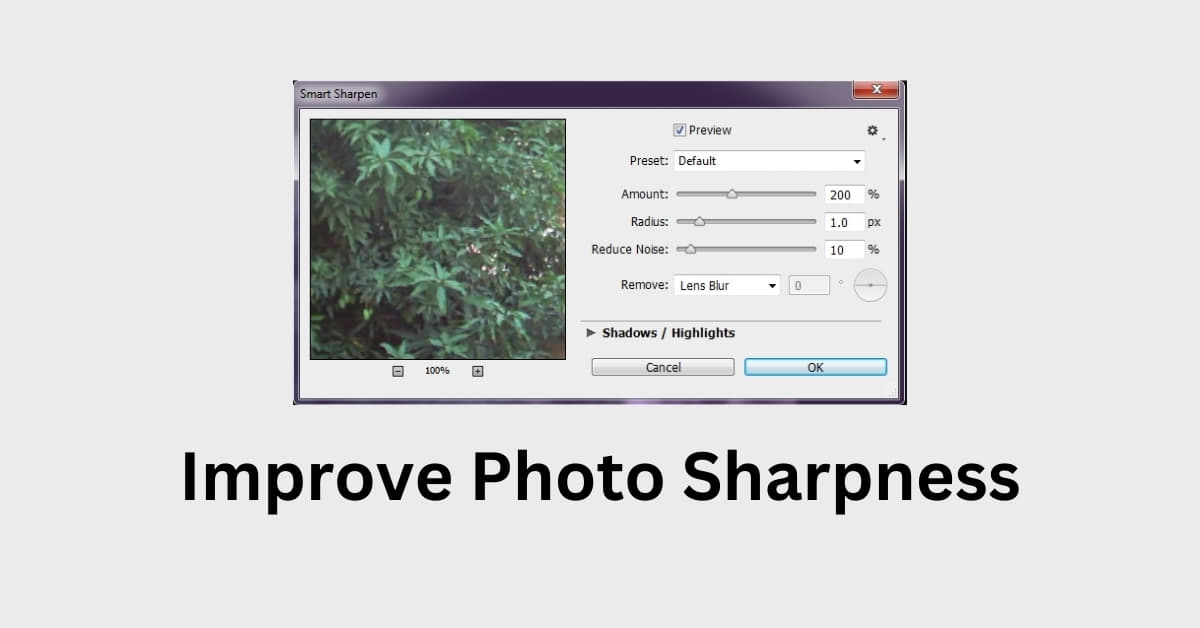In the realm of photography, capturing crystal-clear and sharp images is a goal that every photographer aspires to achieve. While advancements in camera technology play a significant role, post-processing manipulation techniques also play a crucial part in enhancing photo sharpness. In this article, we will explore various manipulation techniques that can elevate the sharpness of your photos, providing a guide for both beginners and seasoned photographers.
1. Contrast Enhancement:
- Increasing contrast helps in defining the edges of objects within an image, contributing to a sharper appearance.
- Use tools like curves or levels in photo editing software to adjust the contrast selectively.
2. Unsharp Masking:
- Unsharp masking is a popular sharpening technique that involves enhancing the edges by creating a contrast between adjacent pixels.
- Adjust the radius and amount parameters in photo editing software for optimal results.
3. High Pass Filter:
- The high pass filter is another effective method for sharpening images.
- Duplicate the image layer, apply a high pass filter, and adjust the blending mode for a sharper look.
4. Smart Sharpening:
- Many modern photo editing tools offer smart sharpening features that intelligently enhance details without introducing artifacts.
- Experiment with different settings to find the right balance for your image.
5. Detail Enhancement:
- Utilize tools like clarity or structure to enhance the fine details in your photos.
- Be cautious not to overdo it, as excessive detail enhancement can lead to unnatural-looking images.
6. Noise Reduction:
- Noise can contribute to the perceived lack of sharpness in an image.
- Apply noise reduction techniques to reduce unwanted graininess, especially in low-light conditions.
7. Lens Correction:
- Correcting lens distortions can significantly improve overall image sharpness.
- Use lens correction tools in post-processing software to address issues like chromatic aberration and vignetting.
FAQs
Can I improve photo sharpness without using post-processing techniques?
While capturing a sharp image in-camera is ideal, post-processing manipulation can significantly enhance sharpness, especially in challenging conditions.
Is there a universal setting for unsharp masking that works for all photos?
No, the optimal settings for unsharp masking vary depending on the image. It’s recommended to experiment and adjust the parameters based on the characteristics of each photo.
Are there any specific tools for smart sharpening that you recommend?
Popular photo editing software like Adobe Photoshop, Lightroom, and Capture One offer advanced smart sharpening tools. Experiment with these tools to find the one that suits your workflow.
How can I avoid over-sharpening my photos during post-processing?
Pay close attention to the changes in your image while applying sharpening techniques. Zoom in to check for artifacts and ensure that the final result looks natural and pleasing to the eye.
Conclusion
Achieving optimal photo sharpness involves a combination of capturing techniques and post-processing manipulation. By experimenting with the mentioned techniques, photographers can elevate the sharpness of their images and create stunning visuals that leave a lasting impression. Keep in mind that moderation is key, and a balance between various manipulation techniques will yield the best results.
This page was last edited on 25 February 2024, at 11:52 am
